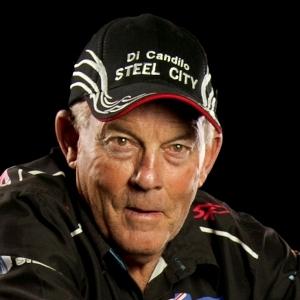
West Australian Rosco McGlashan’s bold bid to race the Brit’s to the 1000mph (1600km/h) World Land Speed record is in tatters after an R&D government grant was withdrawn.
The Aussie Invader 5R project was granted a $450,000 R&D refund in 2013 to be paid over a four-year period with the Australian Taxation Office initially handing out $180,000.

However the ATO subsequently ruled the project did not qualify for the tax refund and has since demanded the money already paid including interest, which has been spent by McGlashan paying bills on the project, be returned.
The Aussie Invader 5R rocket-powered machine measures 18m in length and is stabilised by a 3m high tailfin.
Meeting R&D requirements, the Aussie Invader 5R uses innovations from air brakes to the one-piece tyreless alloy wheels with every component custom built for the project.
Richard Noble, project director for Briton’s Bloodhound SSC (Super Sonic Car) which will attempt a new world land speed record in South Africa later this year, has publicly moved to show support for McGlashan.
In a letter written just before Christmas, Noble wrote (in part): “Extraordinary ventures of this kind are always a struggle but we, on our side of the planet, are very concerned at the thought that Rosco McGlashan and his team have had to down tools after so much hard work and with the end goal in sight.
“Our car, Bloodhound SSC, combines the engine from a current jet fighter with a new form of hybrid rocket being designed for the next generation of space launchers.
“Aussie Invader meanwhile is a pure – rocket design which may be the most powerful vehicle ever driven on the face of the earth.
“We sincerely hope, therefore, that the difficulties faced by the Aussie Invader team can be overcome and that Australia backs its guys and sends them out onto the pitch. The Supersonic Ashes are at stake…”
McGlashan set the Australian land speed record at 500 mph (802.6 km/h) in 1994 before attempting the world mark two years later.
He recorded a terminal speed of 638 mph (1026.76 km/h) on South Australia’s Lake Gairdner which better Richard Noble’s official world mark of 633 mph (1018.71 km/h) however it was not recognised as bad weather prevented a second pass in the opposite direction as the rules stipulate.





















Discussion about this post